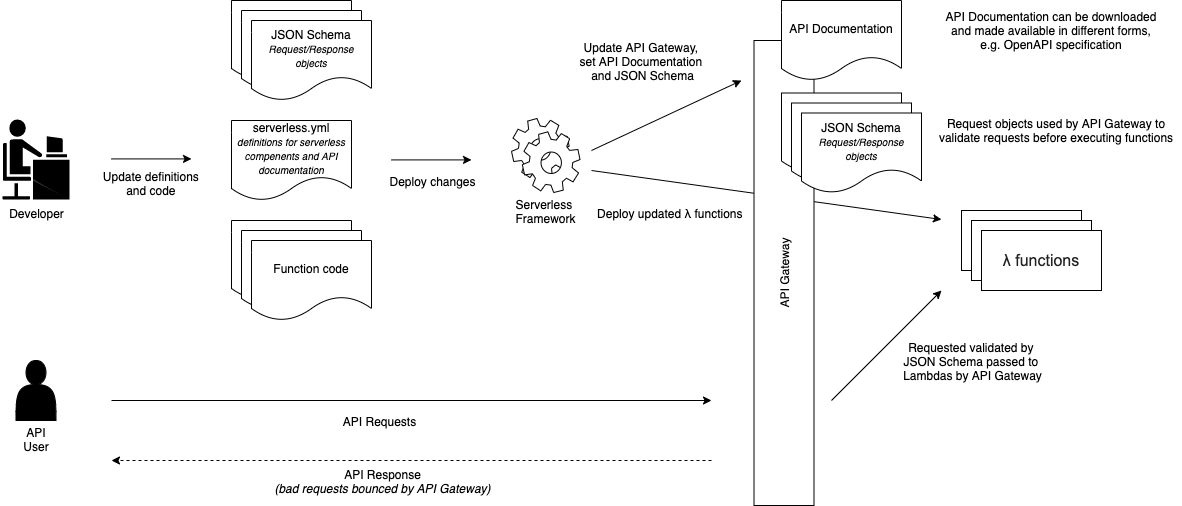Serverless API with AWS Gateway validation and documentation
Serverless API with AWS Gateway validation and documentation

It’s easy to create a simple proof of concept API using Serverless functions on AWS and Azure, but there is a lot more to a production ready API for internal and external use than just getting a function to accept a request.
An area that I’ve been very interested in is documenting APIs. For complex APIs clear specification documentation is vital and becomes more important the more parties interact with an API. If you need to version your API then your documentation is the way you advertise changes to your API over time to avoid breaking existing integrations and move people to updated versions.
One of the advantages of the Serverless approach is the ability to break up your API into individual functions that handle each API endpoint, but this makes it harder to maintain a coherent API with clear documentation.
Fortunately there are tools to help create API Documentation, OpenAPI specification and JSON Schema. The Serverless hosting providers and framework developers are integrating these into their tools to allow developers to quickly create API Documentation and offload related functionality to them.
I’ve created an example API which uses the Serverless Framework and AWS API Gateway to document itself and handle request validation at the API Gateway layer using [JSON Schema](AWS Blog - How to remove boilerplate validation logic in your REST APIs with Amazon API Gateway request validation). The source is here, below is a diagram showing the solution components.

The advantages of this approach is that the documentation is a direct part of the code used to wire up the API (serverless.yml), so any developer creating or modifying an endpoint will be modifying the file used to create the documentation. This makes it easier to keep the documentation up-to-date. Also the API Gateway is handling basic request validation logic via the JSON Schema files, preventing invalid requests from hitting your lambda functions at all. You can take these features further, using the JSON Schema files to generate classes for your code and exposing endpoints that serve the API Documentation/Schema directly in the API for users.
The disadvantage is you are limited to API Documentation features supported by AWS, Serverless and the documentation plugin. For example, AWS Gateway only supports JSON Schema draft 0.4 right now. This limits what you can document on your API. You will still need to do complex business validation in your API functions, aligning errors with the form returned by API Gateway for request schema validation errors.
Overall I like the approach, it saves a large amount of effort in validation and gives a consistent process for maintaining API Documentation across multiple Serverless functions.